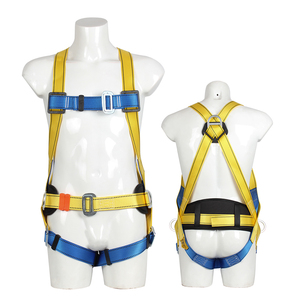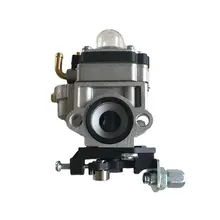Introduction
In the world of professionals who work at heights or handle a variety of tools, a tool harness is an indispensable accessory. It not only enhances efficiency but also improves the quality of work by keeping tools organized and within reach. This article delves into the intricacies of tool harnesses, exploring their types, the importance of choosing the right one, and how to maintain and organize them for optimal performance. Whether you're an electrician, a construction worker, or a recreational climber, understanding tool harnesses can revolutionize your workflow and safety on the job.
Understanding Tool Harnesses
A tool harness, similar to a tool belt, is a crucial accessory for professionals like electricians. It aids in organizing tools, enhancing efficiency, and improving work quality. Tool harnesses often come with numerous pockets for optimal customization and organization of specialized tools. This is particularly important for professionals who spend a lot of time on ladders, as it reduces the need to climb up and down repeatedly to switch out tools, thereby minimizing fatigue and risk of injury.
Types of Tool Harnesses
Tool harnesses come in various types, each designed for specific tasks and environments. The 1-point harness, simple and cost-effective, offers security and good range of movement. The 2-point harness provides additional support with front and rear attachment points. Multi-purpose harnesses are versatile, suitable for professionals and recreational climbers. Work positioning harnesses offer comfort and security for long-duration tasks at height. Rescue/confined space harnesses are essential for high-risk environments, aiding in quick rescue operations. Lastly, rope access harnesses are perfect for activities like abseiling, tested to meet health and safety standards.
Belt Tool Harnesses
Belt tool harnesses are a crucial part of safety gear in construction work. They are designed for work positioning, climbing, and suspension activities in construction. They feature a body belt and a comfortable saddle, making them ideal for long climbs. Some models come with a detachable heavy-duty grommet belt, making them convenient for workers who handle heavy materials. These harnesses are compliant with international safety requirements, ensuring maximum safety.
Vest Tool Harnesses
The vest tool harness, a product featured on Alibaba, is a revolutionary tool harness designed specifically for construction workers. This vest harness is a result of combining advanced technology with high-quality construction gear, providing a fully reimagined way to carry tools and haul heavy equipment. It's designed to help workers stay organized and efficient on the job. This vest harness is a testament to the innovation and practicality that Alibaba's B2B platform offers.
Backpack Tool Harnesses
Tool backpacks are a portable form of tool storage that enhances your efficiency on the job. They allow hands-free access to your tools, eliminating the need to carry a bulky toolbox. You can minimize the tools you carry by packing only what you need for a specific job, leaving the rest in your vehicle's tool organizer. Tool backpacks can be customized for various jobs, allowing you to separate your tools for each project. This reduces the weight you carry and ensures you have exactly what you need for each task. It also saves time as you don't have to reorganize your tools when you return to your vehicle.
Choosing the Right Tool Harness
When choosing the right tool harness, prioritize durability and comfort. High-quality tool harnesses should be sturdy, with leather and thick nylon fabric being excellent material choices. Both materials, when sewn and riveted with robust fasteners, can handle the weight of many tools and withstand daily wear and tear. They're also comfortable, flexible, and soft, preventing discomfort as you move around. Nylon harnesses are lighter, making them a good choice if weight or lower back issues are a concern.
Based on Job Requirements
A tool harness, similar to a tool belt, must accommodate your inventory of tools. It should have the correct size pouches, pockets, and slots to securely store all your essential tools. The tool harness should also be safe and sturdy, with reinforced pockets to withstand sharp tools and sturdy clasps to prevent tools from falling out. The efficiency of your work can be greatly influenced by how your tool harness fits. It should be balanced, with the weight equally distributed, and not cause any discomfort or chafing.
Based on Comfort and Fit
Ergonomic tool belts, a type of tool harness, offer comfort and fit advantages. They distribute tool weight evenly around the waist, reducing the need for excessive tightening and thus improving comfort. The design eliminates tool shifting, preventing awkward back postures and potential musculoskeletal disorders. There are different models to accommodate various worker needs, and they are made from materials like nylon microfiber, leather, and durable synthetic fasteners. The belt's modules are designed for specific tools and can be relocated easily, ensuring a comfortable and customizable fit.
Based on Durability and Material
When choosing a tool harness, durability and material are key considerations. Leather is a popular choice due to its durability, style, and ease of maintenance. Canvas is lightweight, breathable, and durable, while nylon is strong, water-resistant, and easy to clean. Synthetic fabrics like polyester and polyurethane offer similar benefits. High-quality tool harnesses are made with full-grain leather and heavy-duty, water-resistant canvas, ensuring they stand up to the toughest work environments.
Organizing Your Tool Harness
Organizing your tool harness is crucial for efficiency and productivity. Start by categorizing similar tools together, such as screwdrivers, pliers, or wrenches. This makes it easier to locate a specific tool when needed. Tools used with your dominant hand should be placed on the same side of the pouch. For instance, if you use a hammer with your right hand, it should be in your right pouch. Regular maintenance of your tool harness prevents damage to pouches and pockets, ensuring they remain functional for tool organization.
Categorizing Tools
Organizing your tools in a tool harness can be a game-changer. One effective method is to create zones for different tools, ensuring each tool has its designated place. You can also customize your tool harness with containers and baskets for smaller items. Hanging miscellaneous tools off hooks can be beneficial for easy access. For commonly used tools, consider a mobile workbench. Awkwardly sized tools can be stored in labeled totes. Remember, the key is to maintain a system that suits your workflow and enhances efficiency.
Maintaining Accessibility
A well-organized tool harness allows you to keep your tools within easy reach, saving time and increasing efficiency. One way to maintain accessibility is by grouping similar tools together. For instance, you can group all your screwdrivers, pliers, or wrenches together. This way, when you need a specific tool, you’ll know exactly where to look. It's also recommended to put the tools you use with your dominant hand on the same side of the pouch. For example, if you use the hammer with your right hand, put that in your right pouch. This organization method enhances your work efficiency.
Regular Cleaning and Maintenance
Maintaining your tool harness is crucial for its longevity and functionality. Regular cleaning prevents the buildup of dirt, grime, and rust, which can damage tools. For nylon harnesses, use a soft brush or cloth to gently scrub off dirt or debris. For stubborn stains, a mild soap or cleaner designed for nylon can be used. Leather harnesses can be cleaned with mild soap and water or a small amount of oil. After cleaning, let it air dry completely. Always store your tool harness in a dry and safe place to keep it in good condition.
Conclusion
Tool harnesses are more than just a convenience; they are a necessity for professionals who need to carry a variety of tools for their work. The right tool harness can significantly enhance efficiency, safety, and comfort on the job. It's crucial to choose a harness based on job requirements, comfort, fit, and durability. Organizing your tool harness effectively can be a game-changer, with categorization and accessibility being key. Regular maintenance ensures the longevity of your harness, keeping it functional and ready for any task. In essence, a well-chosen, organized, and maintained tool harness is a professional's best ally for a productive and safe work environment.











































 浙公网安备 33010002000092号
浙公网安备 33010002000092号 浙B2-20120091-4
浙B2-20120091-4